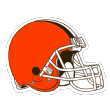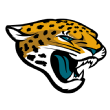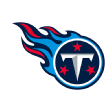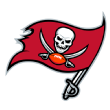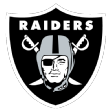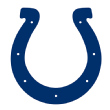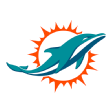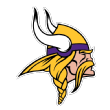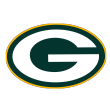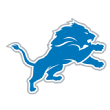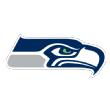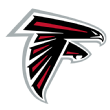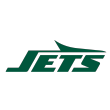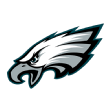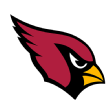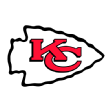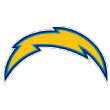http://www.espn.com/nfl/story/_/id/18799620/salary-cap-flexibility-grades-all-32-nfl-teams-2017
Salary-cap flexibility grades for all 32 NFL teams in 2017
Hue Jackson's Browns are flush with cap space, while Jason Garrett's Cowboys have a much tighter cap situation. Getty Images
8:01 AM ET
NFL salary-cap management is no longer about finding creative ways to squeeze players underneath a tight limit. Now, after four consecutive years of at least $10 million annual jumps, most teams have more cap space than they know what to do with.
The 2017 cap will be $167 million, representing a nearly 40 percent rise over five years. The average team is projected to have about $40 million in cap space, ranging from more than $100 million for the
Cleveland Browns to less than $10 million for several other teams, when the new league year begins March 9.
 ESPN's top 150 NFL free agents for 2017
ESPN's top 150 NFL free agents for 2017
Unveiling our ranking of the top 150 free agents in the Class of 2017, compiled by ESPN's experts and featuring analysis from NFL Nation reporters.
-

NFL franchise tag deadline winners, losers
Kirk Cousins is among the winners from the 2017 franchise tag deadline, but the Redskins -- the team that tagged him -- are among the losers. Let John Clayton explain why.
Below, we've grouped teams by their salary-cap health, and they're ranked in no particular order under each grouping. Make no mistake: In the current NFL, every team has enough cap space to do just about anything it wants. These tiers are based on available space, individual cap structure and the length of the to-do list. Cap space is estimated in some cases, but there is a level of subjectivity involved beyond the numbers, so deal with it.
Note: As transactions continue to take place around the start of the new league year, the figures below are as of late afternoon March 1.
Health grade: A+
Cleveland Browns
Approximate space: $105 million
A couple years of caution and few home-grown talents to reward allowed the Browns to carry over more than $50 million from last year's cap. That accounts for nearly half of this season's league-leading total. Receiver
Terrelle Pryor Sr. is in position to consume some of that space, but the Browns have already given linebacker
Jamie Collins a four-year extension (2017 cap hit: $12.1 million) and almost certainly will roll over a significant portion of their current space to 2018.
San Francisco 49ers
Approximate space: $79 million
The 49ers' new management duo, general manager John Lynch and coach Kyle Shanahan, have inherited a relatively barren roster. The good news is they have enough cap space to do just about anything they think can improve it. That includes pursuing a veteran quarterback who would require a premium contract, but their spot at No. 2 overall in the draft might represent their more likely direction.
Jacksonville Jaguars
Approximate space: $70.2 million
No team has used abundant cap space more aggressively the past three years than the Jaguars, who have signed 27 players to nearly $500 million in total contracts. It hasn't helped much -- they have an 11-37 record in that span -- but they once again are in position to (over-) pursue the top of the free-agent class. The recent release of pass-rusher Jared Odrick and pending trade of tight end
Julius Thomas should be cautionary tales.
New England Patriots
Approximate space: $62.3 million
It's just not fair, is it? The defending Super Bowl champions have one of the NFL's cleanest cap ledgers. It starts with quarterback
Tom Brady's absurdly friendly contract, which counts just $14 million against the cap in 2017. (It rises to $22 million for 2018, which suggests a possible renegotiation.) Even with
Jimmy Garoppolo and
Jacoby Brissett on the roster, the Patriots use 5.1 percent less cap space for quarterbacks than the average NFL team. Other than Brady, the only players with cap charges higher than $10 million are left tackle
Nate Solder ($11.2 million) and safety
Devin McCourty ($10.9 million). It's possible that linebacker
Dont'a Hightower, a pending free agent on whom the Patriots declined to use the franchise tag, could add to that list if he re-signs.
Tennessee Titans
Approximate space: $59.9 million
A starting quarterback on his rookie deal is the best bargain in the NFL, and the Titans will have at least one and probably two more years of that with
Marcus Mariota. He'll occupy just $6.6 million in 2017 space and would count $7.7 million in 2018 if the Titans don't extend his contract before then. In the meantime, if they want, the Titans can focus their cap commitment on other expensive needs: pass-rushers and receivers.
Health grade: A
Chicago Bears
Approximate space: $51.5 million
The Bears have enough space, and perhaps the motivation, to be among the most active teams in free agency. Part of that is attributable to the decision to pass on a franchise tag for receiver
Alshon Jeffery; he would have counted more than $16 million against the cap. Parting ways with quarterback
Jay Cutler, an expected move, would free another $13 million. That would leave the Bears without a single player counting more than $8 million against the 2017 cap, a situation ripe for spending. In other words, the Bears have a lot of cap space because they don't have many players left who merit big contracts. After losing 23 of the first 32 games of coach John Fox's tenure, the Bears are in position for a quick(er) fix.
Tampa Bay Buccaneers
Approximate space: $66.9 million
A good portion of that total must be saved to support contract extensions for receiver
Mike Evans and quarterback
Jameis Winston. Evans' new deal could come as early as this spring. Even so, the Buccaneers have plenty of room to find, say, a running back or another receiver or defensive help as well if desired, and general manager Jason Licht has not been shy on the free-agent market in the past.
Health grade: B+
Oakland Raiders
Approximate space: $44 million
The Raiders had so much space in recent years that they had to work hard to meet the NFL's spending floor. After several free-agent sprees under general manager Reggie McKenzie, that's no longer the case. Their estimated 2017 total must be considered in the context of two massive deals that loom: contract extensions for quarterback
Derek Carr and linebacker
Khalil Mack, both of whom will push the highest end of the market for their positions. They could both carry an average cap hit of $20 million annually.
Indianapolis Colts
Approximate space: $54.6 million
New general manager Chris Ballard inherited plenty of space from Ryan Grigson. The Colts have a few free agents of their own to consider, most notably tight end
Jack Doyle, but Ballard is in position to spend heavily to improve the Colts quickly. Other than quarterback
Andrew Luck, the Colts have only two players set to count more than $10 million against the cap in 2017: left tackle
Anthony Castonzo ($12.8 million) and cornerback
Vontae Davis ($10.25 million). Getting Luck some help -- at receiver and along the offensive line -- seems to be the top priority.
Health grade: B
Cincinnati Bengals
Approximate space: $41.8 million
The Bengals have a fair bit of cap space, in part because their two highest-paid offensive lineman -- left tackle
Andrew Whitworth and guard
Kevin Zeitler -- have expiring contracts. They'll need either to re-sign them or find replacements. (They have $29.2 million tied up in quarterback
Andy Dalton and receiver
A.J. Green.) They'll also need to consider the future of their linebacker corps; both
Vontaze Burfict and
Rey Maualuga are entering the final year of their deals.
Carolina Panthers
Approximate space: $32.3 million
The Panthers have been relatively cautious in free agency under general manager Dave Gettleman, so you can count on most of their space going to their own players they hope to re-sign. At the top of that list is defensive tackle
Kawann Short, who is currently consuming nearly $15 million in cap space under the franchise tag.
Miami Dolphins
Approximate space: $36.7 million
For the immediate future, the Dolphins' cap space will be limited by the decision to pay two players high-end "quarterback money." The actual quarterback,
Ryan Tannehill, will count $20.3 million toward the 2017 cap. Defensive tackle
Ndamukong Suh will count $19.1 million. General manager Mike Tannenbaum likes to be active in free agency, and he has the space if desired, but he also has some emerging players to take care of soon. Among them: receivers
Kenny Stills and
Jarvis Landry and safety
Reshad Jones.
Pittsburgh Steelers
Approximate space: $30 million
The Steelers aren't usually big players on the free-agent market, and in most years -- including 2017 -- their available space is largely consumed by extensions for key players. They are largely spent after re-signing receiver
Antonio Brown and using the franchise tag on running back
Le'Veon Bell this week. Brown, Bell and quarterback
Ben Roethlisberger will count about $35 million toward the cap. The Steelers also have looming decisions at linebacker, where
Lawrence Timmons and
Jarvis Jones are all on expiring contracts; linebacker
James Harrison signed a two-year extension this week.
Denver Broncos
Approximate space: $40 million
The Broncos' quarterback money goes to linebacker
Von Miller, whose deal counts $20 million against the 2017 salary cap. Of course, all things being equal, they would prefer to enter training camp with
Trevor Siemian (2017 cap hit: $628,196) and
Paxton Lynch ($2.2 million) competing at quarterback. But they could squeeze in a veteran QB if general manager John Elway really wants to.
Minnesota Vikings
Approximate space: $40.6 million
The Vikings no longer have the luxury of a cheap quarterback, now that they've locked in
Sam Bradford (2017 cap hit: $18 million) as their starter. They'll add to that total when tailback
Adrian Peterson is officially off their books. But there is plenty on the Vikings' to-do list, most notably reassembling the offensive line. They also need to budget for 2018, when the contracts of Bradford and cornerback
Xavier Rhodes expire.
Health grade: B-
Green Bay Packers
Approximate space: $39.9 million
General manager Ted Thompson rarely ventures into free agency, so the Packers' available space is usually best viewed as their potential flexibility to re-sign players with expiring contracts. The list this season is lengthy, including guard
T.J. Lang, running back
Eddie Lacy, tight end
Jared Cook, defensive back
Micah Hyde and linebackers
Nick Perry and
Julius Peppers. To re-sign them all would be a tight squeeze but doable.
Los Angeles Rams
Approximate space: $20 million
The Rams have some space and a bunch of decisions to make over the next year or so. New coach Sean McVay must decide how much of the Rams' defensive core to keep intact. Cornerback
Trumaine Johnson played 2016 under the franchise tag and will do so again this year. Linebacker
Alec Ogletree and cornerback
Lamarcus Joyner are pending free agents. Those decisions must be balanced with the glaring need to get quarterback
Jared Goff more playmakers.
Washington Redskins
Approximate space: $34 million
Quarterback
Kirk Cousins' situation means the Redskins must keep maximum cap flexibility. Franchise tag figures can't be prorated, so Cousins' entire $23.94 million number will count against the 2017 cap. And don't forget that the Redskins already are paying "quarterback money" to cornerback
Josh Norman, who will count $20 million against the 2017 cap. Tack on left tackle
Trent Williams' $15.1 million figure, and it will be difficult for the Redskins to re-sign two of Cousins' top targets,
DeSean Jackson and
Pierre Garcon.
Detroit Lions
Approximate space: $27.4 million
No matter their personnel needs, the Lions must keep in mind that a monster contract extension for quarterback
Matthew Stafford is looming. His contract will expire after the 2017 season, which makes now a good time to extend him. He is currently counting $22 million against the cap, and the Lions have enough space to craft a balanced deal, rather than the backloaded types they once did for him and other stars.
New Orleans Saints
Approximate space: $21.7 million
The Saints get quarterback
Drew Brees at a relatively reasonable $19 million cap charge in 2017, which helps explain their less-frenzied situation compared to in previous years. They'll have enough space to pursue several free agents this month. That flexibility could be short-lived, however. Brees' contract can void after the season, and he'll turn 39 in January 2018. Do they want to commit big cash, and cap space, to him again?
Seattle Seahawks
Approximate space: $26.6 million
The Seahawks remain afloat on the cap, even as quarterback
Russell Wilson counts $18 million and top defenders
Earl Thomas,
Richard Sherman,
Michael Bennett,
Bobby Wagner and
Kam Chancellor count a combined $51 million. For starters, the offensive linemen on Seattle's roster count a total of $5.5 million, 78 percent less than the NFL average. Even so, there isn't a ton of room to make a big shift in thought this offseason.
Houston Texans
Approximate space: $24.5 million
The Texans' problem, as it were, is that they have two players making "quarterback money" and could have a third by the end of the offseason (if the Texans
can bring back cornerback
A.J. Bouye).
Brock Osweiler will count $19 million toward the 2017 cap, and defensive end
J.J. Watt has a $14.5 million charge. All other maneuvers must consider that hefty base.
Atlanta Falcons
Approximate space: $18.4 million
The good news is the Falcons don't have any pending free agents who would require major deals. The most significant might be receiver
Taylor Gabriel, and even he is a restricted free agent. It might be a good idea to use their cap space on left tackle
Jake Matthews, who is now eligible for an extension, and cornerback
Desmond Trufant. His deal expires after 2017.
Baltimore Ravens
Approximate space: $8.3 million
The Ravens are never among the NFL's leaders in cap space, in part because of their emphasis on veteran building blocks and -- more recently -- because of quarterback
Joe Flacco's megadeal. Flacco is set to count $24.55 million against the 2017 cap. The Ravens can create more flexibility with a roster purge, one that is rare for them but could still be looming. Cutting defensive end
Elvis Dumervil, for instance, would create $6 million in space. Releasing safety
Lardarius Webb, meanwhile, could create $5.5 million.
New York Jets
Approximate space: $19.1 million
Most cap-leveraged teams are paying a quarterback top dollar, and the absence of that makes the Jets' situation notable.
Ryan Fitzpatrick and
Geno Smith are free agents, which means that at the moment, the Jets are devoting only $1.8 million in cap space to the position (
Christian Hackenberg and
Bryce Petty). That could change in free agency, but for now, the Jets' cap space is consumed by players such as
Muhammad Wilkerson ($18 million) and receiver
Eric Decker ($8.75 million).
Darrelle Revis ($15.3 million) is included for now, until the
Jets release him on March 9.
Buffalo Bills
Approximate space: $15.7 million
The Bills' space is limited by the $15.9 million consumed by quarterback
Tyrod Taylor, a reasonable figure for an unquestioned starter but subject to change based on a $15.5 million option bonus due March 11. The Bills also have a high level of cap space devoted to defensive veterans
Marcell Dareus (2017 cap hit: $16.4 million) and defensive end
Jerry Hughes ($10.45 million). Nevertheless, they're going to want to use some space to keep linebacker
Zach Brown, who had 149 tackles last season.
Philadelphia Eagles
Approximate space: $12.3 million
The Eagles don't have much extra space, but they're in the "B" tier largely because they've been proactive in re-signing their key veterans. Their cap space has gone to lock in players such as offensive tackles
Jason Peters and
Lane Johnson, who will combine to count $21.7 million against the 2017 salary cap. Tight end
Zach Ertz signed an extension last season that counts $5.6 million, and defensive end
Vinny Curry's 2016 deal counts a reasonable $9 million.
Arizona Cardinals
Approximate space: $22 million
The Cardinals are giving it one more go in 2017 with their veteran nucleus, which means a solid portion of their cap is consumed by quarterback
Carson Palmer ($24.1 million) and receiver
Larry Fitzgerald ($15.9 million). Both players are in the final year of their contracts, so the Cardinals will be in good cap position for a roster makeover in 2018, if desired. They have about $74 million committed for 2018, the sixth-lowest total in the NFL.
Health grade: C
Kansas City Chiefs
Approximate space: $17.6 million -- Berry
The Chiefs' high activity in free agency in recent years, combined with rewards for their own players, leaves them without as much flexibility as most teams. Pass-rusher
Justin Houston will count $22.1 million against the cap, one of the highest charges for a non-quarterback in the NFL, while quarterback
Alex Smith is at $16.9 million and receiver
Jeremy Maclin is at $12.4 million. Offensive tackles
Eric Fisher and
Mitchell Schwartz will combine to count more than $16 million. Tight end
Travis Kelce's new contract gives the Chiefs a one-year reprieve ($5.4 million) before his cap charge doubles in 2018.
New York Giants
Approximate space: $8.3 million
The Giants have a top-heavy cap structure, with four players -- quarterback
Eli Manning, pass-rusher
Olivier Vernon, defensive end
Jason Pierre-Paul and cornerback
Janoris Jenkins -- counting at least $15 million against the cap. Nose tackle
Damon Harrison counts $10.6 million, which brings the total to nearly $80 million for that group. The Giants could bring that number down by signing Pierre-Paul to a long-term deal, but otherwise they must be conservative, knowing they'll need to make a massive extension offer to receiver
Odell Beckham Jr. in the next year or two.
Dallas Cowboys
Approximate space: $4 million
The Cowboys were one of the NFL's few teams that needed to restructure contracts in order to give themselves enough offseason cap space to operate. Left tackle
Tyron Smith's deal was shuffled for at least the third time, lowering his 2017 cap charge to $8.8 million but raising it to $17.5 million in 2018. The Cowboys did the same for center
Travis Frederick, who counts $4.5 million in 2017 and $13.2 million in 2018. This "kick-the-can" approach is largely why the Cowboys have the NFL's tightest cap situation most years. If quarterback
Tony Romo is released, he could still be on the cap books for another two years, depending on how the Cowboys classify it. On the positive side: They'll benefit from at least two more years of rookie contracts for quarterback
Dak Prescott and running back
Ezekiel Elliott before those two are eligible for extensions.
Los Angeles Chargers
Approximate space: $4 million
The Chargers got a little top-heavy after using the franchise tag on defensive end
Melvin Ingram ($14.5 million), giving them four players who count $9.5 million or more against the cap: quarterback
Philip Rivers ($20 million), cornerback
Brandon Flowers ($11 million) and defensive lineman
Corey Liuget ($9.5 million). They can lessen Ingram's hit with a long-term extension, but otherwise, the Chargers' situation is not ideal if you're of the belief that they must make significant roster progress to compete.





